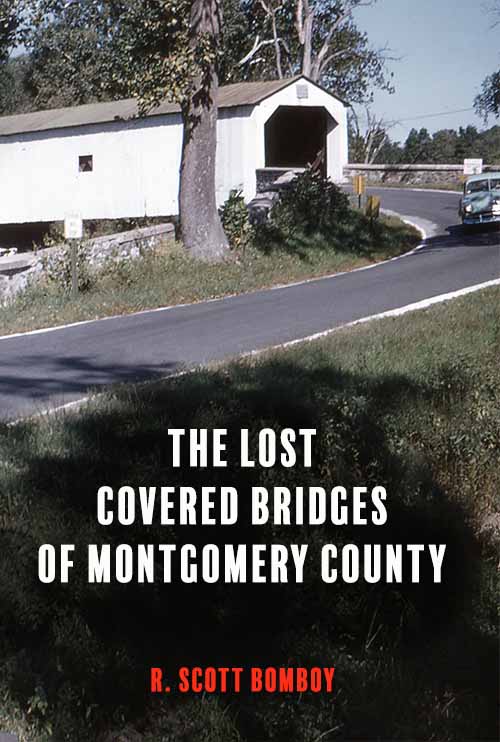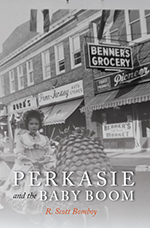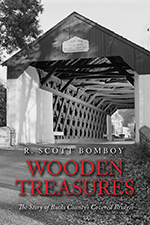In 1895, the residents of the upcoming Upper Bucks County village of Benjamin lost a court fight to form their own borough. Today, the region known as South Perkasie retains much of the history from that era.

In 1899, Perkasie and Benjamin residents rejoiced at the news of their merger.
Benjamin’s hotel, two mills, a general store and one of its churches still stand as do more than dozen of its houses. Its former turnpike is Walnut Street (Route 152). Its covered bridge was moved in 1958, however.
Benjamin (also known as Bridgetown) eventually accepted an offer to join the neighboring Perkasie Borough in 1898. Perkasie Borough’s court-approved annexation of Benjamin a year later brought more prosperity to “Perkasians” and “Benjaminites” as the local newspaper called early residents. The favorable May 8, 1899 decision from Judge Harman Yerkes was the fifth attempt by Benjamin’s residents to get better roads, schools, water and electric for their former village.
The Perkasie Central News, the local newspaper, documented these disputes and it also played a role in promoting the merger. Co-owners Henry G. Moyer and Samuel Kramer had personal and business interests in Benjamin. Moyer had been an active leader of the Bridgetown Evangelical Association Church since the 1870s. Kramer’s Menlo amusement park also sat in the village’s outer regions.
East Rockhill Township opposed any Benjamin separation after its East Rockhill’s divorce from West Rockhill Township. Census data from 1890 showed that East Rockhill would lose nearly 500 of its 1,600 residents if it lost Benjamin (and its tax income).

Benjamin or Bridgetown was a bustling village, as shown in this 1891 map from the Library of Congress.
Benjamin and Perkasie had common links going back to the 1770s. Land records at the Bucks County Historical Society show that two families owned the lands just north and south of the Perkiomen Creek, which divided modern-day Perkasie. The Stout family owned much of the land between the creek and Ridge Road, while the Groff family owned the land between the creek and Hilltown Township to the south.
Bridgetown’s development came before Perkasie’s. In the late 1820s, the Rev. John Andrew Strassburger acquired a mill and property belong to Revolutionary War veteran Benjamin Rosenberger. Strassburger improved the mill and its mill race, and in 1832 Bucks County added an early covered bridge just north of Strassburger’s Mill. Known as the Pleasant Spring Covered Bridge, the structure allowed people, carts, and horses to safely cross a road that connected Hagersville and Sellersville. A second road that eventually became a turnpike fronted Strassburger’s Mill (now the Benfield Mill). By the 1850s, Bridgetown started forming as a village, with its own hotel, general store, at least two mills, and a blacksmith shop. (A similar attempted village in Perkasie failed in the late 1850s.)
After the Civil War, both Bridgetown and Perkasie expanded. Investors Joseph Hendricks and Mahlon Myers bought five abandoned buildings in Perkasie in 1869 and by 1871, they were selling land plots. Most importantly, the federal government in July 1871 appointed Hendricks as Perkasie’s postmaster, an important factor in expanding business in the region.
In Benjamin, Stephen Young’s hotel was joined by two churches as social gathering points: St. Andrew’s Union Church and the Bridgetown Evangelical Church. The rapid growth of the North Pennsylvania Railroad (and later the Reading Railroad) brought more people and business to the region. And in 1879, Perkasie village and its 300 residents gained Borough status without apparent opposition from Rockhill Township, where it was located.

The long-lost church on Main Street in Bridgetown.
However, events in Bridgetown unfolded differently. On May 12, 1887, the village received its own post office, named Benjamin, in the general store across from Bridgetown’s hotel. A decade earlier, life there also changed greatly when the privately-owned Perkasie and Bridgetown Turnpike opened for business. One of two main streets in Bridgetown became a toll road, connecting Perkasie with another turnpike south of Bridgetown.
By 1894, the Central News usually referred to the village as Benjamin and reported that its residents were nearly unanimous in their desire to become a borough. Over the next two years, the Benjaminites submitted three borough petitions to the Bucks County Court of Quarter Sessions. Each petition was rejected by a grand jury. And each time, there were protests in Benjamin.
After the third rejection, the Central News revealed that more than 300 East Rockhill residents filed objections, citing the loss of tax revenue as causing an undue road-repair burden.
Two issues forced the Benjaminites and the Perkasians to consider a union. In 1893, talk started of an ambitious venture to build a trolley system between Perkasie and Doylestown, the county seat. A key section of the trolley’s path would need to go through Benjamin and the privately owned turnpike.
Of course, electric was needed to run the trolley. On its own, Benjamin could not afford to install electricity unless it could negotiate a deal with the trolley company. By 1897, Perkasie Borough had nearly 2,000 residents as it became a cigar-making hub in Upper Bucks County. Perkasie’s annexation of Benjamin would give the Benjamin better roads, the promise of schools, electricity, water and sewer systems, and more business as a stop on the trolley line. In return, Perkasie’s regional influence would grow with a combined population of 2,500 residents and it would eliminate a potential obstacle in the Perkasie-Doylestown trolley plan by giving it leverage against the Perkasie-Bridgetown Turnpike shareholders.
After near unanimous petitions from Perkasie Borough and Bridgetown, Judge Yerkes’ court again rejected the annexation plan in March 1898, citing East Rockhill Township’s opposition. The Benjaminites gathered at Hunsberger’s Hotel (now the South Perkasie Hotel), joined by Perkasie residents, who said “we want you, you want us. We must get together!”

Perkasie and Benjamin residents met at Hunsberger’s Hotel (now The Perk) to force the annexation issue in April 1898.
Perkasie Borough and Bridgetown turned to two top attorneys, Paul Applebach and Mahlon Stout, to devise a plan. This time, Perkasie Borough annexed Benjamin using a borough ordinance under the state law and forced the issue in court. Judge Yerkes disallowed East Rockhill’s objections and in early May, he approved the merger.
The former village of Benjamin or Bridgetown became South Perkasie, or Perkasie’s Third Ward, on May 8, 1899. On hearing the news, the Benjaminites broke out into song, built bonfires and set off fireworks.

A parade shortly after the annexation.
Perkasie Borough’s plan became quickly apparent. In June 1899, it used eminent domain to condemn the Perkasie-Bridgetown Turnpike, buying out its investors and making it a free road. Electric service soon followed in the expanded Perkasie Borough to support two new trolley lines that connected Perkasie with Philadelphia and Allentown.
However, the third trolley line running on the former Bridgetown turnpike, now Walnut Street in South Perkasie, never materialized. In 1902, the state denied the Doylestown-Perkasie Electric Railway a charter after a rival trolley company with greater political connections claimed it owned part of the trolley right of way.
One mystery that remains is who was the Benjamin post office named for? In 1954, Charles Fretz told the Perkasie News-Herald the post office was named for Benjamin Althouse, a Civil War veteran who lived across the street from the general store. Fretz was a teenager at the time and Althouse’s neighbor. Another theory is that it was named after President Benjamin Harrison; however, President Harrison took office two years after the post office got its name. Another possibility is the founder of America’s post office system: Benjamin Franklin.







One Comment
Found it… The old W.E.Savacool Feed Mill